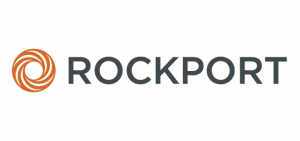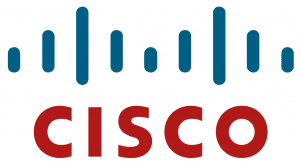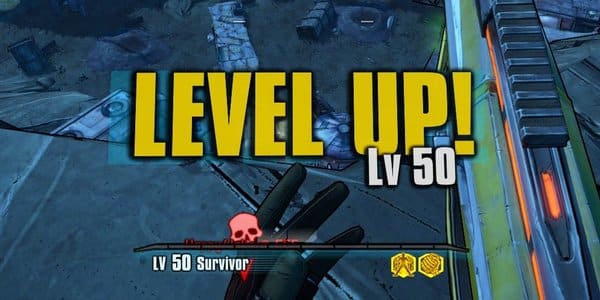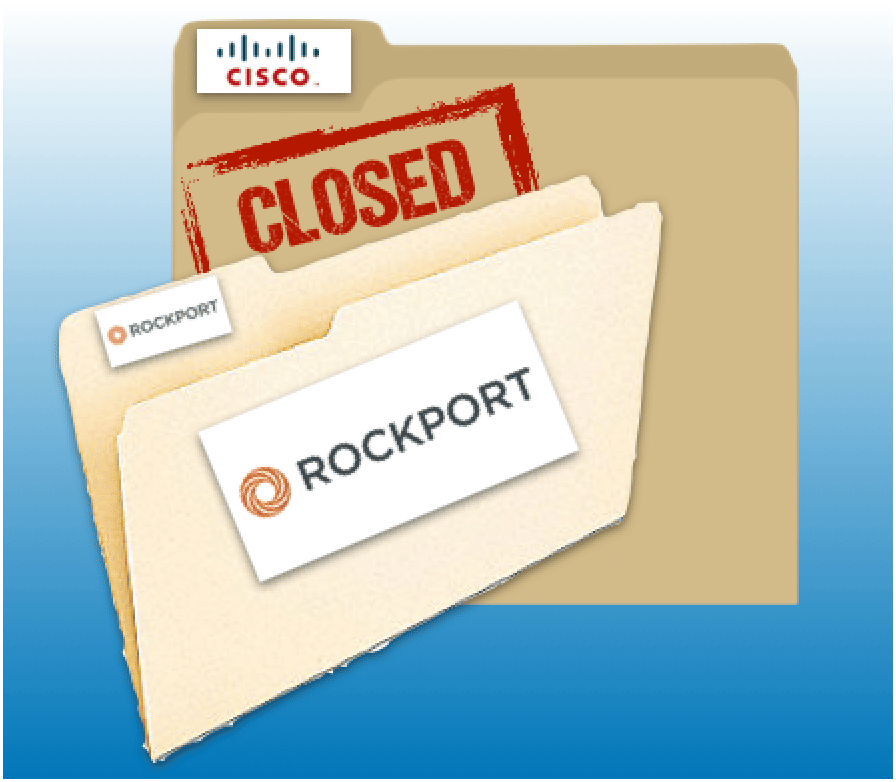As I mentioned in my Storage Short Take #20, I have decided to leave Cisco. December 2, 2019, was my last day, and while it seems many people can change positions as often as they change their bedsheets, I’m not one of those people who can simply leave without reflecting upon the experience.
Of course, when I reflect, I must share. 🙂

If you want to learn more about why I decided to leave Cisco, read on. I’m not going to apologize for the length, though. At different points I’ve been asked about these kinds of things quite a bit, and this is the best way to collate all the answers into one master post.
The Cisco Impact

Cisco permitted me the opportunity to work side-by-side with some of the most brilliant people I’ve ever met. Not just inside Cisco, but outside the company as well. I have met the people who literally make the Internet work, who wrote how storage should be transported and kept safe. I’ve been honored enough to be standing close to the most brilliant technologists the 20th and 21st Century has produced for Data Center, Storage, and Networking. Unsung heroes who, outside of a very small group of people, most people will never know their names.

Then I became one of the “they.” I met the “they.” I went out to dinner with the “they.” I went out drinking with the “they.” It was a heady experience, especially for someone who was previously only into the mechanics of making things work.
Before this, I was a Systems Engineer, as well as a Solutions Architect. It was my job to make things work for customers, choosing the right tools for the job. I was involved in creating SANs for customers since the early 2000s, and never really thought about who made the technologies work, or the process behind making them.

Not this table, specifically, but that would be way cool.
Cisco gave me a seat at the table. Literally. Starting off with the Fibre Channel Industry Association, then SNIA, and then NVM Express, I began to join the Boards of Directors. Like anything else, once you get closer to the action you start to see the flaws, but you also get to understand why things are the way they are. This is apparently valuable information, because that’s the kind of questions I get asked most of all by people who are not part of the process.
That door was opened by Cisco, and it would be irresponsible of me to not acknowledge that. I just hope that once the opportunity was presented to me, I took full advantage of it. Only time will tell how successful I was.
Life at Cisco
I began my Cisco journey as a Product Manager for FCoE. It was then that I realized that my life was going to be very, very difficult, unless I took the bull by the horns and started making some noise.
As a product manager, I had a product to sell, of course. But unlike most of the products inside of Cisco, FcoE was a software technology, not a hardware technology. This meant that there were a lot of people who needed to know how FCoE worked, both inside and outside the company. To my surprise, there were quite a few who didn’t.
Not only did many people outside Cisco not understand it, but many people inside of Cisco didn’t understand it either. On top of that, many competitors to Cisco were outright lying to people about the technology (because either they didn’t have it, or they didn’t want to compete with Cisco in the first place).

It’s true that FCoE was a huge part of how I started to become known in the industry, in general. That and people started to like my hats. (I wore hats for years before people started associating me with them, believe it or not!)
Just for fun, I did a tally of the presentation and written work that I’ve done, specifically for public consumption. I’ve only started logging some of them here in the Storage Bibliography, but since 2010, I’ve evidently produced well over 1000 hours of internal and external Cisco presentation content. I’ve written more than 75,000 words in blogs, white papers, and data sheets.
Believe it or not, none of those presentations were actually part of my job. I mean, it’s what I’ve been known for, and why people continue to ask me to do them – but they were always ancillary to what my day-to-day tasks were all about.
Most of the time, the blogs were written to answer questions that I got all the time. That’s how The Napkins Dialogues for QCN and Lossless iSCSI and the Life of a Packet Walk came about, for example. (Sadly, Cisco has since deleted the FCoE vs. QCN blog).
Little did I know that writing these blogs would have a far greater reach, and a far more important impact, than I ever could havre imagined.
Having an Impact

There are two anecdotes that are worth sharing, which I can do now, I think, without too much fear of self-aggrandizement. Both have to do with the impact of blogs and how powerful a medium they can be for people.
Back in 2012, as the top speeds of Fibre Channel were peaking at 16GFC, and Ethernet was topping out at 40GbE, I wrote a blog about how FCoE could be used in between switches to provide an interesting solution to a common problem inside of Fibre Channel environments – oversubscription bottlenecks.
About six months after I wrote the blog, I was getting into an elevator when a sales guy tapped me on the shoulder. It was a bit shocking to see someone so enthusiastic about shaking my hand.
“I wanted to thank you for writing those blogs,” he said, in heavily accented English. I found out later that he worked in Eastern Europe.
“If they are helpful,” I said, wondering when he was going to stop shaking my hand, “then I’m very happy to write them.”
“No, you don’t understand,” he said, pumping my hand on each downbeat of his words. “I have a customer who read your blog and bought $4M worth of equipment.”

As it turned out, it was completely true. Many sales people and SEs have forwarded my blogs to their customers. I knew this. But this was the first time that I had heard of that someone had actually released a P.O. based on something I wrote.
Apparently, it wouldn’t be the last. The second anecdote was even more of a shock.
Do you remember Dynamic FCoE? No? I’m not really surprised. It’s a shame, too, really, because Dynamic FCoE was the shiznit.
Dynamic FCoE, when using the right supported products, was ridiculously easy to set up. IIRC, it was only 3 or 5 commands. It was incredibly robust, amazingly powerful, and scalable for as big as your leaf/spine Clos networks needed to go. It even supported full SAN A/B separation. It was the “one network” solution that customers had been asking for, for over a decade.
Therein lied the rub, as they say. “Supported products.” Fibre Channel networks only scaled (at the time) to 10,000 nodes. That’s all Cisco would support (later it got increased to 20,000 nodes). When running a leaf/spine Clos network, however, the number of nodes that could be interconnected could jump to an order of magnitude greater, or more.
So, with FC (and FCoE) both supporting 10,000 nodes, Dynamic FCoE – with its potential for even more – would have adopted the same supporting structure, right?
Wrong.
Due to QA Resources, Cisco only supported – wait for it – 32 nodes. That didn’t even fill up a single switch, much less a leaf/spine network!
So, Dynamic FCoE, brilliant as it was, was left to die on the vine. All the blogs, presentations, and promotion that I did simply wasn’t worth anything. And I was sad, now.
Fast forward around 3 years.
By this time, I had moved on from being a product manager and had joined the CTO office as a R&D Engineer for Advanced Storage. I still cared about Fibre Channel (after all, I still represented Cisco on the Board for FCIA and participated in the T11 technical meetings), and still knew more about FCoE and Dynamic FCoE than most anyone else.
Out of the blue, I get a phone call from one of the named account managers. (For those of you who don’t know, a “named” account is a very large customer with its own dedicated sales and support teams.) Apparently, his customer had deployed Dynamic FCoE in their data center, and wanted to know if the latest software updates to the switches still supported their SAN configuration.
This was, quite literally, the first time I’d heard anyone had deployed Dynamic FCoE. Needless to say, I was shocked.
“They’ve deployed Dynamic FCoE?” I asked, incredulous.
“Yes, and they’re really happy with it. They don’t want to mess anything up, and if they go through the firmware upgrade it’s not clear from the documentation whether or not it will be disruptive.”
“Out of curiosity,” I asked. “Just how many FCoE nodes are we talking?”
“I’m not entirely sure, but somewhere around 110,000.”

Now it was the AM’s turn to be surprised. “No, why?”
“Well, it’s just that I’ve never heard of anyone deploying Dynamic FCoE anywhere near this big. After all, we’ve only qualified 32 nodes.” Even saying the words out loud sounded inadequate.
“Well, I don’t know what to tell you,” he said. “It’s a huge deployment, and it’s been working well for them ever since.”
“What… how… “ I tried to find the words. “How did it come to pass that they decided to use Dynamic FCoE so big?”
“Well, they read your blog, of course.”
This, more than anything else, was absolutely staggering. This customer had deployed a technology for their Data Center, with over 100 thousand nodes, based upon a blog.
Unfortunately for me, I was no longer working on that project, and had to refer them to someone still in that group. I never found out what happened to that customer or to that deployment.

It also reinforced the realization that what I did mattered. There was a responsibility, here. If I wrote something, they weren’t simply taking my say-so (hey, I’ve got an ego, sure, but not that big of an ego!). They transferred the credibility of Cisco on to me, and reasoned that because of the fact that Cisco had implicitly authorized what I was writing, that it was good advice.
I’ve always taken that lesson to heart. While there may have been times when I changed my mind, or technology matured, or use cases weren’t perfect, I always dedicated a level of accuracy to whatever I wrote so that it was well-researched and thoroughly verifiable.
For all of the frustrations that occurred, it was always clear that Cisco was absolutely key in making those successes happen for me. Without that incredible cachet behind me, none of these projects would have happened. I consider myself fortunate to have the opportunity to move the needle, as much as I did.
Time to Level Up
The upside to working for Cisco is that I have been given the opportunity to have unique career experiences. The downside to having unique career experiences, though, is that it is very difficult to move forward.

Not quite a fit
Every step forward feels like it is like hiking across a rarely-trodden path. Every job seems like striking a square peg into a round hole. Every job description seems inadequate and forced. I do a lot of stuff, but the stuff that I do doesn’t always fit neatly into a headcount requisition.
Let’s face it, there just aren’t a lot of companies looking for someone who does Data Center storage with a broad industry Board experience, is there?
I love being a technologist. I love working on deeply technical storage problems, contemplating the “what ifs”, determining new and exciting ways of doing things. This is the perfect job for someone in a CTO role, or even a CTO office. This is where I sat for a while, in fact – in the CTO office of the Cisco UCS division, working on solving storage problems.
It was a perfect fit for me. I could participate in standards work, which is all forward-thinking, work on patentable ideas, coordinate with Distinguished Engineers (I wasn’t one) and Fellows and plan out possible roadmap items and integrate storage as a key component of future products.
Then, about four or five years ago, Cisco took a different turn. This is not to say it was a bad thing, or a wrong decision (Cisco’s stock more than doubled during this time frame), but rather it left my role as something of a statistical outlier.
The CTO office in which I belonged was dissolved. New management came in, and I was shuffled from one manager to another in a very short period of time – in one 3-year stretch I had 15 managers. It became a running joke – if you wanted any career advancement, just have J report to you and in less than 6 months, you’re golden!
However, while this was beneficial for the people I reported to, it left me and my career path starting over at square one every two or three months. That meant having to “prove” myself over and over to someone new, who didn’t know me from any other name on a page. Most of these people – bless them – had no clue about storage at all.
So, when you’re in that situation, what do you do? Well, you do a soft-shoe for a while, which is what I did. I continued representing Cisco to the standards bodies and to the world in general, but now my role had changed dramatically. I was no longer very much of a technologist, but rather a “public face” and far more of an educator.
Worse, I began to grow further and further away from the products as well as the engineering teams. I was far more well-known outside of Cisco than inside of Cisco. Eventually, in fact, it was clear that all the work that I had done in the past was useless for my internal reputation as very few of the directors and VPs even knew who I was in the first place.

The soft-shoe should never become the dance.
There was no actual moment when I realized that my career at Cisco wasn’t going to progress any further, but it had dawned on me that once the softshoe becomes the dance, you won’t be invited onto the floor for very much longer.
It also meant, sadly, that because of my unique and unusual skill set, finding something more aligned with what I could do (not to mention what I wanted to do), would be difficult. Finding roles inside of a CTO office, focusing on storage, is not exactly something that falls off the trees. Finding a “fit” would be tough.
Enter Rockport Networks

I do have to be careful here, because Rockport is only now coming out of stealth. Here is a description of what they do, in their own words (that way I know I’m not going to get into trouble!)
Rockport is a software company specializing in innovative connectivity for HPC, Enterprise and CSP applications such as Machine Learning and AI. Rockport’s switchless networking is replacing the traditional data center network architecture with an entirely new approach. This emerging technology supports East West traffic increasing performance, providing efficiencies in scale and simulation, superior security, radically reduced cost, and delivering power savings that have been acknowledge within the industry as an environmentally sustainable technology. Rockport’s direct connect architecture and path diversity is the emerging technology to serve mission centric computing needs.
Marketing (and buzzword) hype aside, what this means is that Rockport has a new and fascinating technology that has profound implications for storage networks within Hyperscalers’ and HPC environments. I’ve taken a look at their technology, and it’s good. Real good. As in, “yes-I-think this-is-so-good-I-want-to-work-on-this-too” good.
Fortunately for me, they took a look at my background and thought something similar about my background.
Starting December 9, I’ll be joining Rockport Networks as a Field CTO, doing the kinds of things that not only am I good at, but absolutely love doing. I’ll be helping future direction by providing input from my Data Center experience into future products, while working with customers to engage in state-of-the-art storage and storage networking designs.
As Rockport becomes more comfortable with promoting their technology, I’ll be playing a part in doing that as well. For that reason, I’m not going to be disappearing at all – in fact, in certain circles you may see even more of me!
Consequences

For one thing, Rockport does not work on Fibre Channel, so unfortunately it’s become necessary to resign from the Board of Directors for FCIA. I’ve been a part of this organization the longest, so it was quite an emotional resignation for me.


Bottom Line
Moving on from Cisco was not a decision made lightly, of course. I won’t pretend that every day at Cisco was pure bliss, of course, as those who follow me on Twitter can attest to the occasional frustrated rants about tech support and crazy IT policies.
However, working for Cisco has made me ready for the next step, the next level, and unfortunately it also meant that it prepared me further than it could also provide.
I’m extremely excited about this new situation, though. I really cannot wait until it comes time to go into detail about what Rockport does, and why I think it’s such an amazing technology. The people I’ve met are incredible, and I’m looking forward to the challenge ahead of me.



Comments
Pingback: Storage Short Take #21 – J Metz's Blog